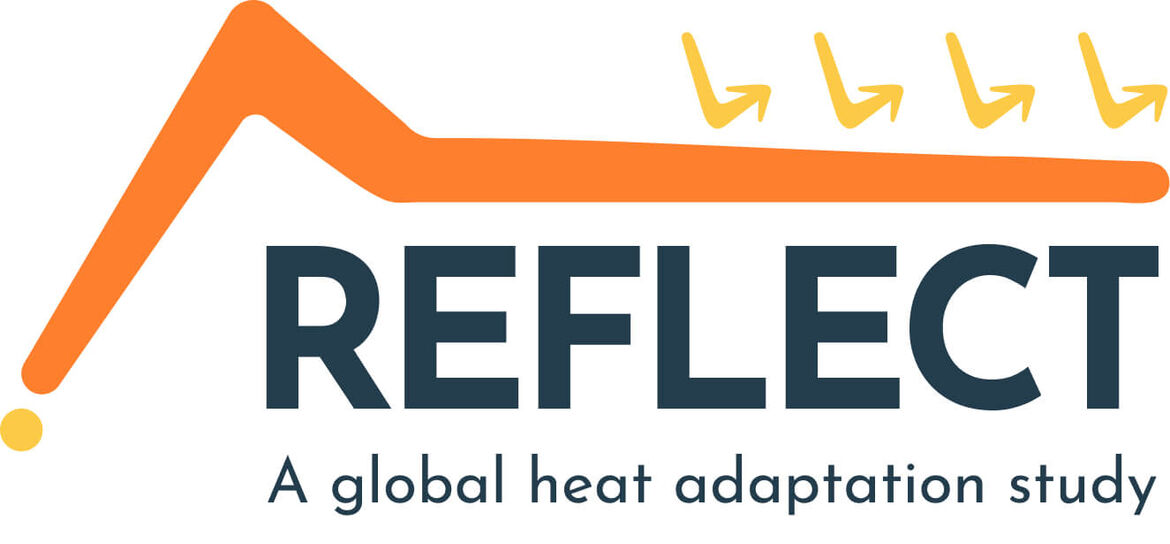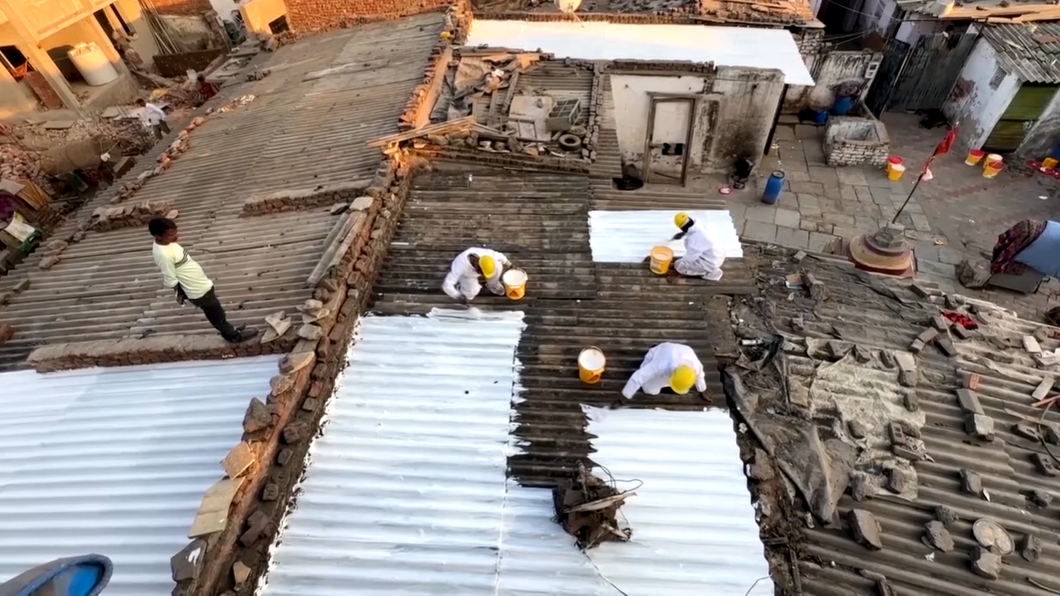REFLECT: Rethinking Effective Flexible Low-Carbon Everyday-use Construction Technologies

Partners




Overview

REFLECT: Rethinking Effective Flexible Low-Carbon Everyday-use Construction Technologies
Key Facts
Pioneering Global Heat Adaptation Solutions
Extreme heat poses serious risks to health, productivity, and living conditions, particularly in low- and middle-income countries (LMICs) where air conditioning is costly and often inaccessible. With rising global temperatures, innovative, passive cooling solutions are urgently needed.
The REFLECT Study: Scaling Cool Roofs for Heat Adaptation
REFLECT (Rethinking Effective Flexible Low-Carbon Everyday-use Construction Technologies) is a global trial testing the impact of cool roofs on health, environmental sustainability, and economic outcomes. Operating in Burkina Faso, India, Mexico, and Niue, REFLECT investigates how low-cost, highly reflective roof coatings can:
- Reduce indoor air temperatures and improve thermal comfort.
- Protect health by reducing heat stress, cardiovascular strain, and sleep disruption.
- Lower energy use, minimizing reliance on expensive cooling technologies.
- Enhance productivity by creating cooler work and living environments.
Key Interventions Include:
- Community Perspectives on Cool Roofs – Understanding local acceptance and adaptation needs.
- Cool Roof Mechanism Analysis – Testing temperature reduction and durability using sensor-equipped homes.
- Health and Wellbeing Trial – Conducting a large-scale randomized controlled trial (RCT) to measure the direct impact of cool roofs on health, energy savings, and economic factors.
Aims and Objectives
REFLECT aims to demonstrate the viability of cool roofs as a scalable, low-cost heat adaptation strategy in Burkina Faso, India, Mexico, and Niue. Through scientific research, real-world testing, and policy engagement, the initiative seeks to inform global adaptation efforts by generating evidence-based insights into the health, economic, and environmental benefits of cool roofs.
Objectives of this study:
- Assess cool roof effectiveness in lowering indoor temperatures across different climates.
- Measure health outcomes, including heat-related illnesses, sleep quality, mental wellbeing, and cardiovascular health.
- Evaluate environmental sustainability, tracking energy savings, humidity levels, and roof reflectivity.
- Quantify economic impacts, such as reduced cooling costs, productivity gains, and household spending shifts.
- Engage policymakers and local stakeholders to scale up adoption of cool roof technologies in LMICs.
Study design and methods
Study Design
Overview
REFLECT integrates scientific research, participatory community engagement, and real-world implementation to test, refine, and scale climate-smart roofing solutions across Burkina Faso, India, Mexico, and Niue. The study combines qualitative research, sensor-based temperature monitoring, and a large-scale randomized controlled trial (RCT).
Interventions
- Study 1: Community Perspectives on Cool Roofs – Conducting interviews and focus groups to assess awareness, perceptions, and adoption barriers.
- Study 2: Cool Roof Mechanism Analysis – Installing temperature sensors in test homes to measure thermal performance over 12 months.
- Study 3: Large-Scale Randomized Controlled Trial (RCT) – Testing cool roofs in 408 homes per country (1,632 homes total), tracking health, environmental, and economic impacts over a year.
Activities
Data Collection and Monitoring
- Smart wearable devices to track heart rate, sleep, and physical activity.
- Environmental sensors to measure temperature, humidity, air circulation, and roof reflectivity.
- Household surveys, physical exams, and biomarker analysis to assess health and wellbeing outcomes.
Community Engagement and Policy Advocacy
- Capacity building workshops for builders, homeowners, and policymakers.
- Partnerships with local governments to integrate findings into heat action plans.
- Scaling and market engagement to develop cost-effective cool roof solutions for widespread adoption.
Methods
Tracked Outcomes
- Health: Evaluating cardiovascular health, sleep patterns, physical activity, mental wellbeing, and heat stress indicators.
- Environmental: Measuring indoor temperature reduction, humidity levels, and cooling energy savings.
- Economic: Assessing household energy costs, food consumption shifts, productivity changes, and healthcare usage.
Novel Methodology
- Wearable sensors to track continuous health and activity data.
- Real-time temperature monitoring with advanced sensor arrays in test homes.
- Blood biomarkers and medical assessments to scientifically measure heat adaptation benefits.
- Multi-site comparative analysis across four diverse climates to optimize cool roof performance.


